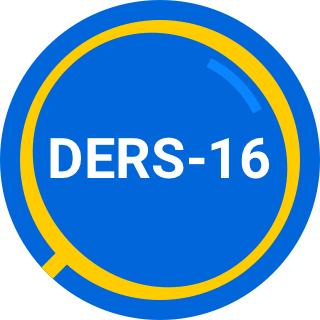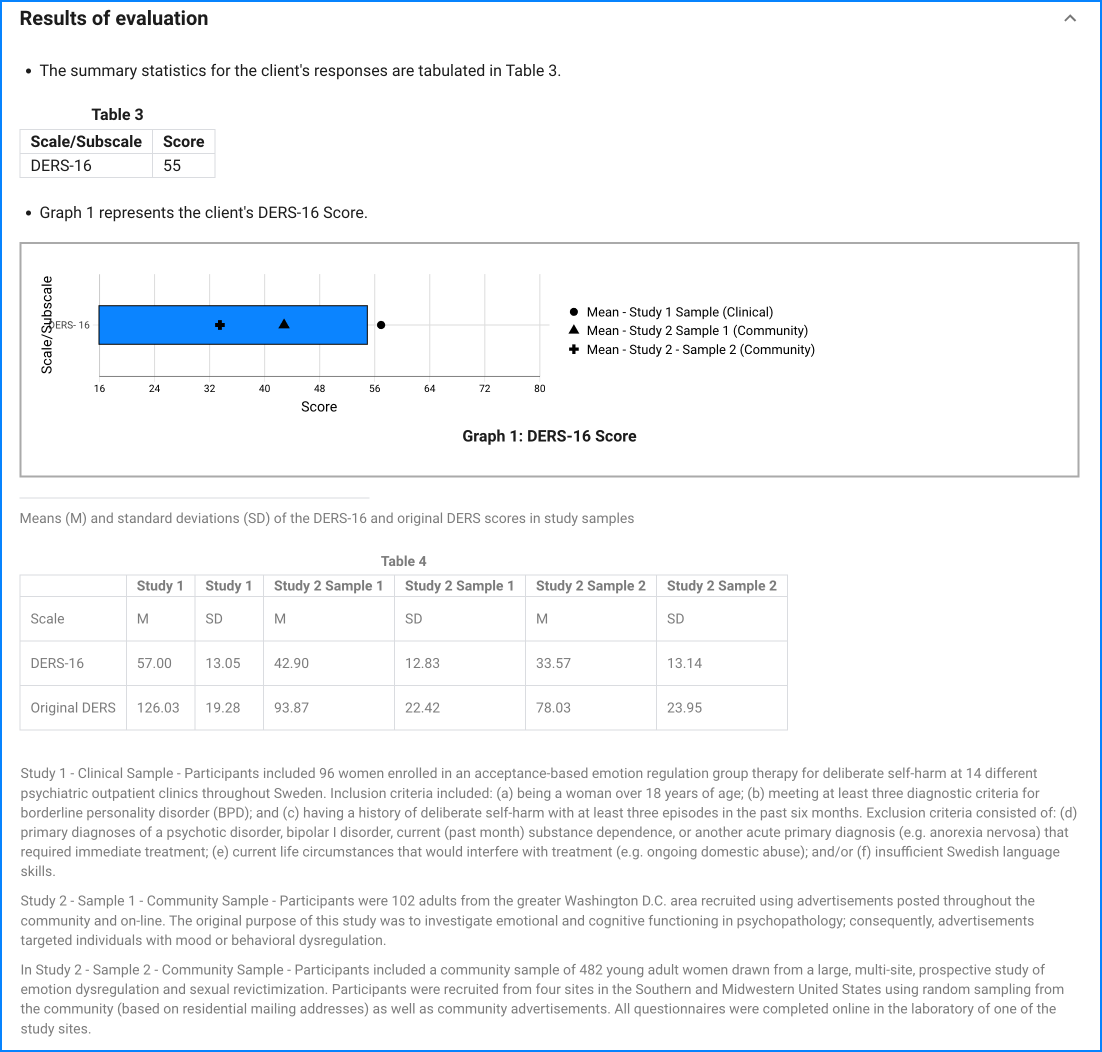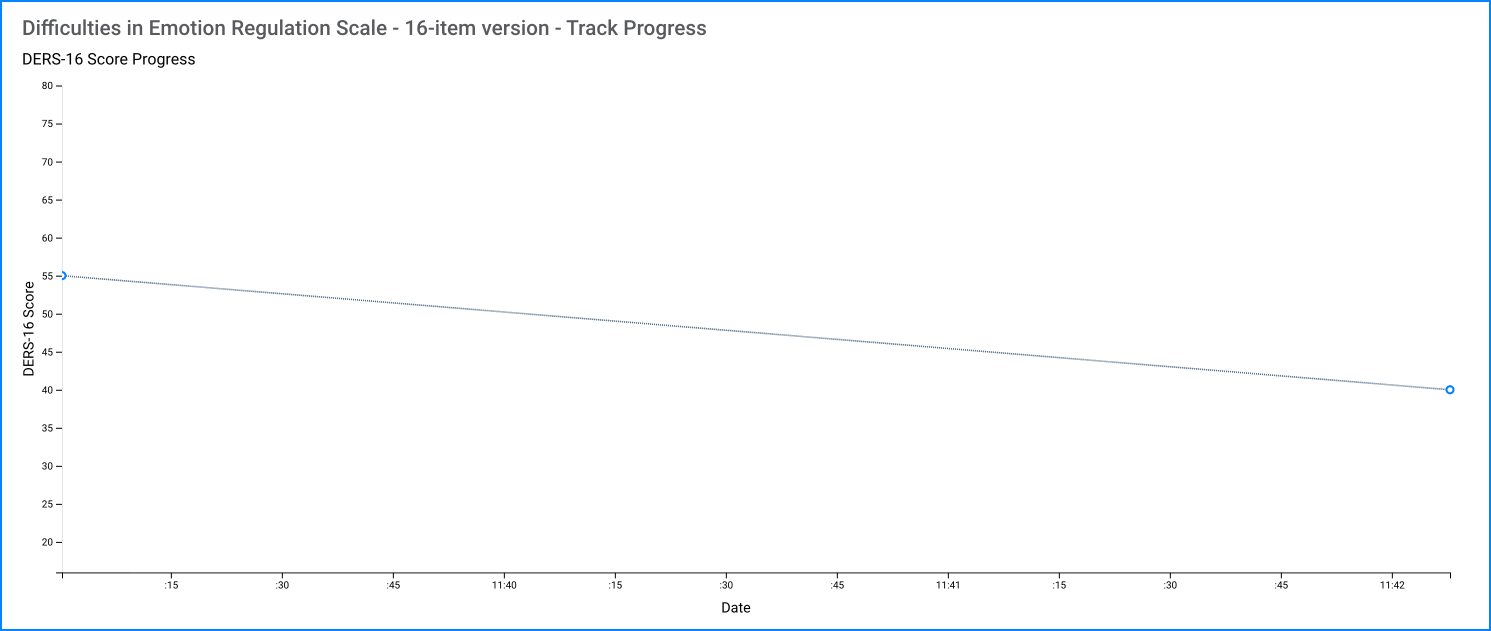Since the questionnaire relies on client self-report, all responses should be verified by the clinician, and a definitive diagnosis is made on clinical grounds taking into account how well the client understood the questionnaire, as well as other relevant information from the client.
Moreover, the reliance on only self-reported emotional responding is limiting, as it is likely that some individuals do not have full awareness of their emotional responses, thereby reducing the extent to which they can accurately report on those responses.
DERS-16 is a brief 16-item version of the DERS.
The Difficulties in Emotion Regulation Scale (DERS) is based on a clinically-useful conceptualization of emotion regulation that was developed to be applicable to a wide variety of psychological difficulties and relevant to clinical applications and treatment development. Specifically, the conceptual definition of emotion regulation on which the DERS is based emphasizes the functionality of emotions and focuses on adaptive ways of responding to emotional distress, including the: (a) awareness, understanding, and acceptance of emotions; (b) ability to control behaviors when experiencing negative emotions; (c) flexible use of situationally-appropriate strategies to modulate the intensity and/or duration of emotional responses, rather than to eliminate emotions entirely; and (d) willingness to experience negative emotions as part of pursuing meaningful activities in life.
Scores on the DERS have been found to be associated with multiple forms of psychopathology, including posttraumatic stress disorder, borderline personality disorder, major depression, eating disorders, and generalized anxiety disorder. In addition, emotion regulation difficulties as assessed by the DERS are related to a number of maladaptive behaviors thought to serve an emotion regulating function, such as deliberate self-harm, substance use, risky sexual behavior, and purging behavior. The DERS has also demonstrated associations with biological, psychophysiological, neurological, and behavioral (e.g., persistence on laboratory-based distress-inducing tasks) indices of emotion regulation. Finally, scores on the DERS have been found to change in response to treatments that target emotion regulation, including an emotion regulation group therapy and dialectical behavior therapy, suggesting that the measure is sensitive to change over time and has utility in treatment outcome research.
Given that the two versions of the DERS show similar psychometric properties, the DERS-16 is a viable replacement for the full-length DERS when a brief assessment of overall emotion regulation difficulties is required. In addition, within certain contexts, the DERS-16 has several advantages compared to the original DERS. For example, clinicians and researchers may find the DERS-16 easier to administer during ongoing sessions or repeatedly when monitoring treatment progress. Patients would also likely find the DERS-16 to be less of a burden than the original 36-item version. Finally, the DERS-16 may be more feasible for large scale studies where the space available for measures is limited (e.g., epidemiological studies).
The DERS-16 only provides an overall score of emotion regulation difficulties, whereas the original DERS provides a total score and six subscale scores. Although this may limit the amount of information one can obtain from the DERS-16, there is a substantial amount of research that supports the utility of using a global score to evaluate emotion regulation difficulties within various forms of psychopathology and in predicting maladaptive behaviors.




